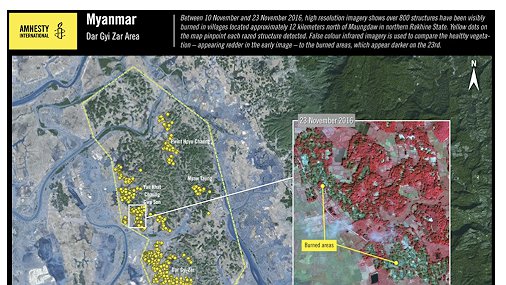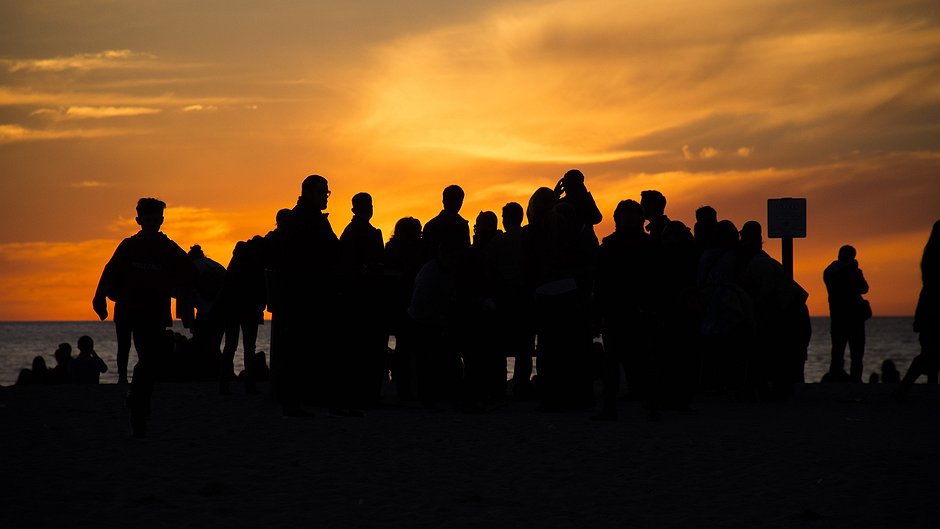
3 types of information used for open-source investigations
In our last blog, we talked about what open source information is and how it can be used for human rights investigations.
Now let’s examine the different types of open source information human rights researchers use for their work. These include satellite imagery, public records and social media.
1. Satellite imagery
The availability of commercial satellite imagery at high resolution has enabled human rights organisations to investigate previously difficult to access areas such as North Korea or Darfur. It also allows researchers to quickly track things such as environmental changes, troop movements, or new constructions.
Example: Amnesty International analysed satellite imagery over Rakhine State, Myanmar in 2016. One could see the sheer scale of destruction over a very short period of time in a place where no external groups had access. This supported allegations of a large-scale government campaign to target and eradicate the Rohingya people from the state.

2. Public records
Public records can provide access to a wealth of information regarding the activity of the state or other actors relevant to human rights investigations such as large corporations. Publicly available documents may provide records of arms sales or deliveries or indicate the command structure of security or military forces.
Example: In the example below, Amnesty used its Decoders Network, an innovative platform developed to crowdsource human rights research, to collect data about oil spills in the Niger Delta from public records.

3. Social media
Social media platforms such as Twitter, Facebook, and YouTube are increasingly the main mediums by which information is shared or communicated between individuals. Images or videos uploaded to these platforms that document events as they happen play a role in many of Amnesty’s investigations into possible human rights violations.

Interested to learn more? sign up for Amnesty International’s free 2-part course on Advocacy Assembly.
Related courses

90 mins
 School of Data
School of Data
90 mins
 School of Data
School of Data Rory Peck Trust
Rory Peck Trust
50 mins
 Rory Peck Trust
Rory Peck Trust
Blogs

6 useful resources for journalists covering Covid-19
With a global pandemic spreading throughout the world, journalists are under increasing pressure to report accurate and relevant news for the masses. Often when covering a crisis, those on the reporting frontlines compromise their physical safety and mental health. To show some solidarity, the Advocacy Assembly team curated a list of useful resources from other organisations leading the way on this.

5 ways to find data for your next story
Data journalism is fast becoming a big trend in newsrooms across the globe. However, data isn’t always so easy to find. Here are five ways to get data for your next article.



